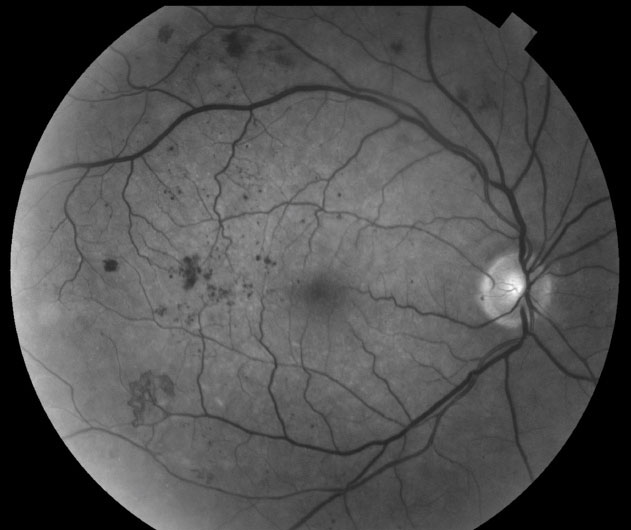 |
Clinicians might need to consider diabetes as a risk factor in patients affected by wet AMD during anti-angiogenic treatment. Photo: Click here. Click image to enlarge. |
The relationship between diabetes and AMD is both complex and controversial. Even though some authors have reported diabetes as a risk factor for AMD (i.e., especially for wet AMD), other studies did not find any correlation between these two disorders. Importantly, diabetic retinopathy (DR) and wet AMD share treatment options, as anti-VEGF intravitreal injections are used to treat both AMD-associated macular neovascularization (MNV) and diabetic macular edema.
A recent OCT-A study conducted in Italy aimed at assessing whether the presence of diabetes and DR could impact the baseline characteristics of treatment-naïve AMD-associated type 1 MNV. Also, the researchers assessed longitudinal changes occurring to type 1 MNV during anti-VEGF therapy in order to understand whether the presence of diabetes and DR may impact on such modifications. The team found that mild nonproliferative DR eyes responded differently to wet AMD treatment. In particular, the diabetic group showed limited contraction of the MNV lesion area after intravitreal therapy.
The study enrolled 50 treatment-naïve eyes with a diagnosis of wet AMD and type 1 MNV, of which 20 were affected by mild DR. En face OCT-A were examined for the MNV lesion area (mm2), the MNV flow area (mm2), the central macular thickness and the BCVA. The OCT-A acquisition was performed before the loading phase of intravitreal injection of aflibercept and then one month after the last intravitreal injection of loading phase of three monthly injections.
All morpho-functional parameters showed a significant change at the end of the study period compared with values in both groups. Furthermore, the researchers found a greater MNV area reduction after the loading phase in eyes without DR. In the remaining parameters, no significant changes were found between two groups. The study revealed a lesser MNV area reduction after loading dose of anti-VEGF therapy in eyes affected by diabetic retinopathy.
The researchers hypothesized two co-existing mechanisms behind the finding: (1) the presence of DR in eyes affected by wet AMD could lead to higher levels of VEGF, and therefore a worse response to treatment in terms of MNV downsizing; (2) DR is known to be associated with choroidal hypoperfusion that might contribute to the MNV persisting as a mechanism of defense to the retinal pigment epithelium and outer retina ischemia.
“These results provide evidence that the DR impact might play a fundamental role not only in the development and progression of MNV but also in evaluating reaction to anti-angiogenic therapy,” the researchers concluded in their paper. “Future larger studies using swept-source OCT-A and longer follow-up are needed to support our preliminary findings.”
Viggiano P, Landini L, Grassi MO, et al. Effects of diabetic retinopathy on longitudinal morphological changes in AMD-associated type 1 macular neovascularization. Sci Rep. 2023;13(1):16337. |

